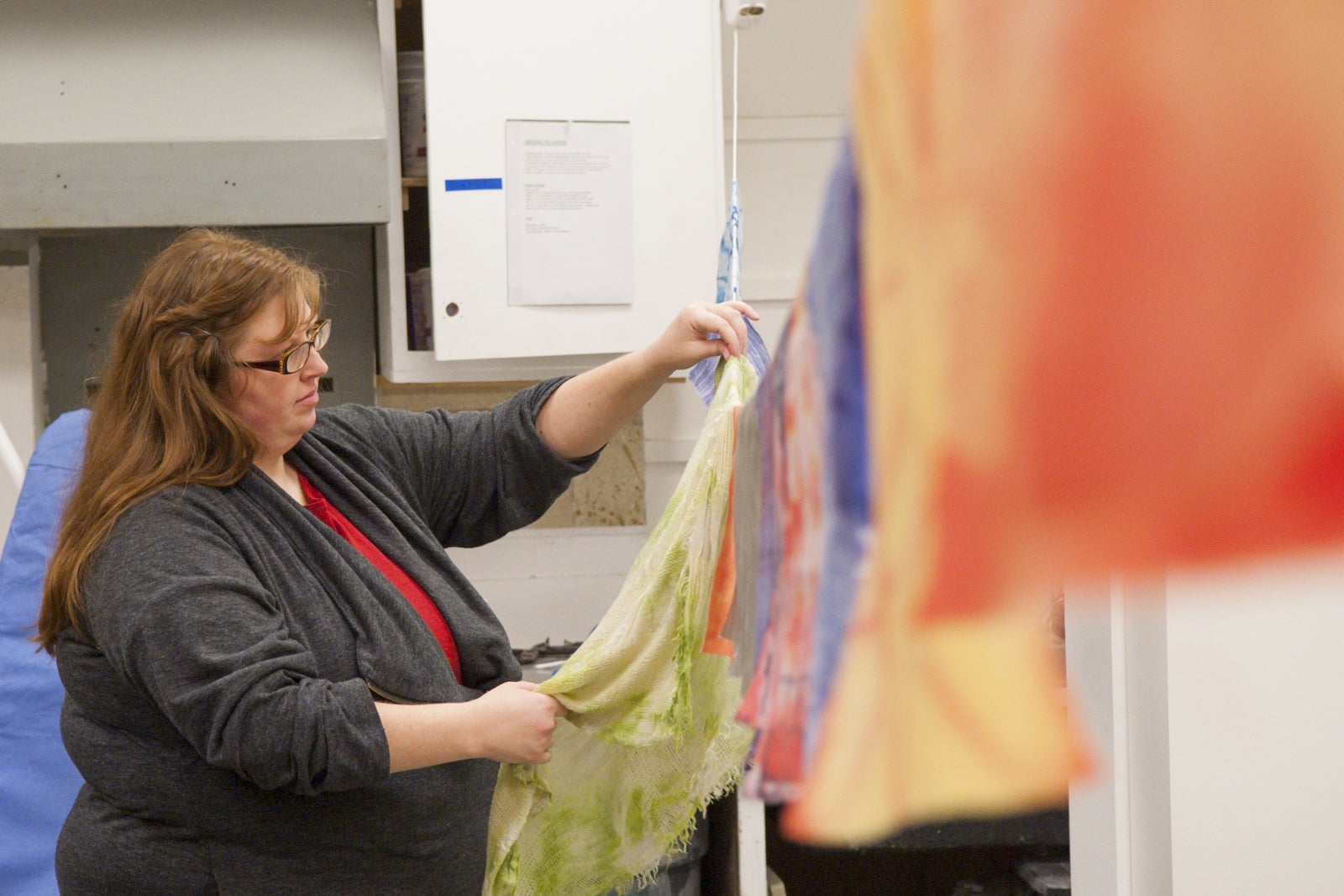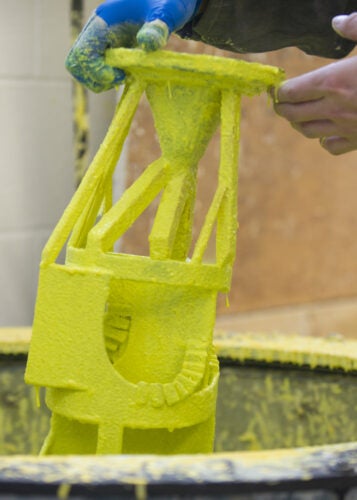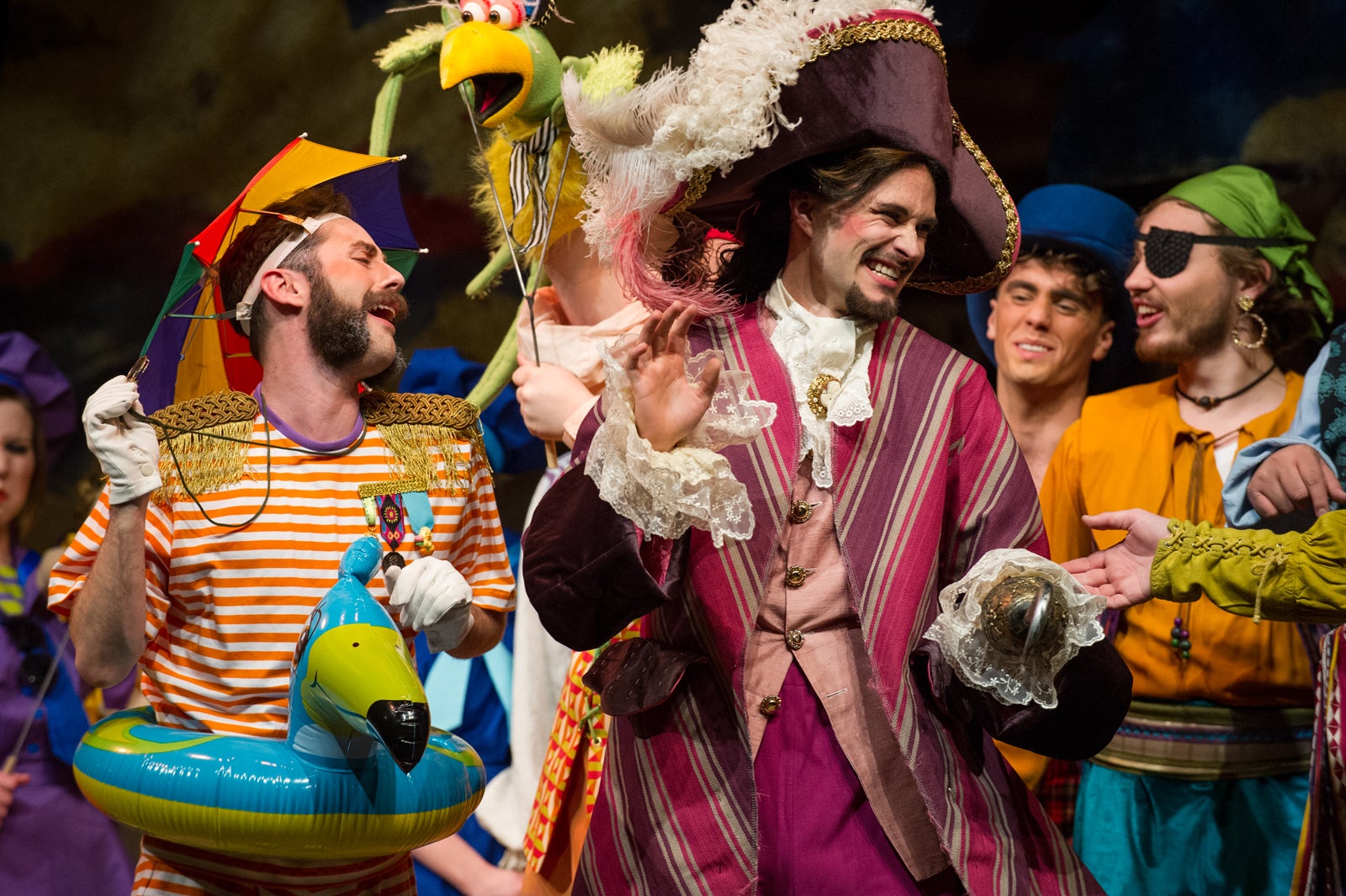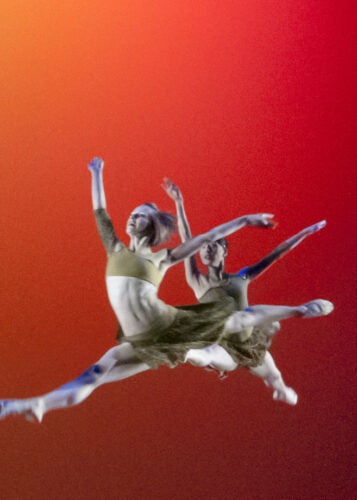A new approach to teaching the arts better prepares students to be working professional artists
When Amanda Baschnagel, Caitlin Susen and Dayna Smith graduated from Boise State University’s theatre arts program in 2016, they faced a problem familiar to many fresh arts graduates: a dearth of opportunities to work in their chosen field. But thanks to the comprehensive theatre education they received, they were able to tackle the problem head on.
“We saw other grads and theatre artists in town struggling with the same thing, so we decided to create an annual event that would bring artists from all over the Boise theatre community and the larger American theatre community together to share new American stories with a Boise audience,” Smith explained.
Thus was born the Campfire Theatre Festival, an annual three-day event held in Boise that includes staged readings, guest performances and workshops, and development of new plays.
“Boise State gave us everything to start Campfire.” —Dayna Smith
“Working on the board of the Theatre Majors’ Association gave us some hands-on experience running a theatre company, and our work within the department taught us the fundamental skills — the craft of theatre and how to run a business,” Smith said.

Arming arts students with the practical skills to succeed in the arts is an ever-evolving process, one that faculty at Boise State take seriously. In fall 2017, the university formed a new School of the Arts that encompasses the departments of music, art, design and visual studies, and the newly created Department of Theatre, Film and Creative Writing. Not only will the new School of the Arts prepare students to think, collaborate and create outside their chosen genre, it will give students like Smith, Baschnagel and Susen the practical tools to build a life in the arts.
“Graduates should be able to hit the ground running as they’re starting their careers. We want them to have a sense of the history of their art form, the theories that have driven their art form, the technical practices that make their art form possible, and the impacts it can have economically and socially,” said Dr. Leslie Durham, interim dean of the College of Arts and Sciences.
“We are hoping to train deeply creative, socially thoughtful and economically viable artists.” —Dr. Leslie Durham
“It’s not just about the arts — that’s the core, the backbone, the foundation of the school, but we don’t want to ignore STEM,” added Dr. Kathleen Keys, interim director of the school. “We want to bring in other disciplines as well to partner with and give students as many experiences as we can to carve out and shape their creative life — be it as art appreciators or art generators.”
A group of faculty first broached the idea for a School of the Arts in 2016 in response to a rapidly changing culture for working artists in the Treasure Valley and beyond. The new school is strengthening arts education, thus better preparing students who aspire to be professional artists by allowing them to take transdisciplinary classes to fit their major’s core requirements. It also acts as a dedicated entity to support, facilitate, publicize and provide diverse arts opportunities for students and the greater Treasure Valley.

“Data shows that students’ chances of sustaining an artistic career are better if they can cross disciplines and economic sectors. We are giving our students opportunities to develop a broad set of artistic skills that can fuel creativity throughout their lives,” said Durham.
“The entrepreneurial skills we learned at Boise State have also helped us in our individual arts careers,” Baschnagel said. “We learned how to fundraise, market and budget not only for our company but also for ourselves. Additionally, the connections we made at the university carried us across the country to professional organizations in Minneapolis, Washington, D.C., Connecticut and New York City. Many of those opportunities have fueled our individual arts careers, and they have all informed how we run Campfire.”
“I wish I would’ve had that kind of artistic training as an undergrad,” said Mitch Wieland, a professor in Boise State’s Master of Fine Arts in Creative Writing program, which merged with the theatre arts department.
“Today, fiction writers are working as screenwriters in Hollywood – to have a background in that, training in that, exposure to film and theatre as an undergrad, it gives our students a professional edge and makes for stronger writers.”
As of fall 2018, the new school is the home to several new degree programs, including bachelor of arts (BA) and bachelor of fine arts (BFA) degrees in creative writing, a BFA and a certificate in narrative arts, and a BA and BFA in film and television arts. Minor degree options include arts entrepreneurship, as well as minors in dance, theatre, creative writing, and film and television arts. The school could one day boast classes in subjects like musical theatre, and digital and electronic arts. Starting in fall 2019, the popular BFA illustration degree program will begin to offer a new track and classes in animation and digital illustration.
“Boise State has never had an actual creative writing major, and we’re stoked about it,” Wieland added. “There are only 30 BFAs in creative writing in the entire country. We’ll be the thirty-first.”

The School of the Arts follows a university-wide trend at Boise State of rethinking how education is packaged to students. The College of Innovation and Design is an incubator of ideas, hosting events like the Idaho Entrepreneur Challenge, which awards up to $100,000 annually for worthy business ideas launched by students. The School of Public Service dissolved traditional college departments in favor of a broad structure that allows faculty and students to easily move between subjects within the school. For instance, students in the environmental studies program can take classes taught by urban studies professors and political science professors often teach courses to global studies majors.
The arts school’s formation also coincides with the construction of Boise State’s prominent new arts building, located along the city’s Capitol Boulevard, within several hundred feet of the Boise Art Museum and less than a mile from the state capitol. The new building will house the university’s art, design and visual studies department.
However, “the new building is certainly a centerpiece of the new school but it isn’t the only building in which the creation and study of the arts is taking place,” Durham noted.

With the new School of the Arts comes the potential to rethink how arts students engage not only with their practice on campus, but within the greater Treasure Valley.
“A lot of Boise State alumni are already working at arts organizations throughout the city and beyond,” Keys explained. “We have the normal channels set up with students interning, but I’d like to see those relationships develop even further, perhaps by creating a School of the Arts volunteer corps that would engage with arts organizations and the community in new ways.”
Graduate String Quartet
Boise State’s thriving music department may have no better ambassadors than its graduate string quartet. Students invited to be part of the graduate string quartet receive two-year scholarships for their graduate programs, become paid performers with the Boise Philharmonic and regularly are booked for recitals both on and off campus.
